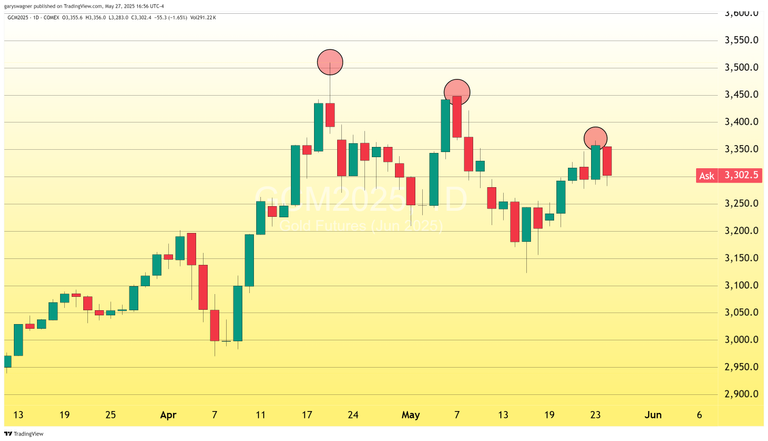(Kitco Commentary) - The precious metals market experienced a notable reversal this week as gold prices retreated from recent highs, driven by the same geopolitical forces that had previously fueled the metal's ascent.
Gold's recent volatility can be traced directly to fluctuating trade relations between major economic powers. Last week, President Donald Trump's assessment that negotiations between the European Union and the United States were "going nowhere" sent investors scrambling for safe-haven assets, propelling gold to its highest closing price since May 7. This pessimistic outlook reinforced gold's traditional role as a hedge against geopolitical uncertainty.
However, the market's mood shifted dramatically following breakthrough developments over the weekend. European Commission President Ursula von der Leyen successfully advanced trade negotiations with the United States on Sunday, marking significant progress after months of stalled diplomatic efforts. This positive momentum, combined with concurrent improvements in US-China trade discussions, substantially reduced demand for defensive assets.
The impact was immediate and substantial. Gold futures declined by $59.30, representing a 1.76% drop to $3,306.40 as of 3:55 PM Eastern time. This retreat underscores how quickly precious metals markets can respond to shifting geopolitical narratives, particularly when progress emerges in long-standing trade disputes.

Risk-On Sentiment Boosts Equities
The diplomatic progress triggered a broader shift toward risk assets, as investors moved capital from safe havens into growth-oriented investments. US equity markets posted impressive gains, with both the NASDAQ Composite and S&P 500 advancing approximately 2%. This classic rotation from defensive to growth assets reflects investors' growing confidence that easing trade tensions will support corporate profits and broader economic expansion.
From a technical perspective, gold's recent performance reveals concerning patterns for bulls. The current decline marks the third consecutive lower high since the metal reached an intraday peak above $3,500 on April 22. This pattern of diminishing rallies suggests that gold may no longer derive the same benefit from trade uncertainty that it enjoyed during the height of tensions in April.
The series of lower highs indicates potential weakness in the underlying bullish momentum that had driven gold to record levels earlier this year. If this pattern continues, it could signal a more significant shift in market dynamics rather than merely a temporary correction.
Despite recent weakness, major financial institutions maintain constructive views on gold's medium-term prospects. Citigroup recently upgraded its near-term forecast, projecting gold prices between $3,100 and $3,500 within the next three months. This represents an increase from the bank's previous range of $3,000 to $3,300 an ounce, though notably, this revision preceded the latest diplomatic developments that have pressured prices.
Citi's analysis also raises important concerns about market saturation. The bank's research indicates that global gold investment has reached unprecedented levels, with approximately 0.5% of worldwide GDP currently allocated to the precious metal, the highest proportion in five decades. This statistic suggests that gold may be approaching peak investment penetration, potentially limiting further upside potential.
Market Saturation Concerns
The saturation thesis presents a compelling challenge to gold's bull case. If institutional and retail investors have already maximized their gold allocations, future price appreciation would require either new investor categories entering the market or existing investors increasing their already substantial positions. Both scenarios become less likely as prices reach historically elevated levels.
This dynamic could create a ceiling effect, where continued progress in trade negotiations or diminishing geopolitical tensions could trigger more significant selling pressure as investors lack fresh buying interest to absorb supply. The current environment may test whether gold's recent gains were driven by fundamental demand or merely temporary safe-haven flows.
The precious metals market now faces a critical juncture. Continued diplomatic progress between major trading partners could further erode gold's safe-haven premium, potentially leading to a meaningful correction from current levels. Conversely, any setbacks in negotiations or emergence of new geopolitical tensions could quickly reverse the current downtrend.
The key question for investors is whether President Trump's negotiating tactics will continue to generate the uncertainty that has traditionally supported gold prices, or if substantive progress toward trade agreements will establish a new equilibrium with reduced precious metals demand. Market participants appear increasingly skeptical of rhetoric-driven volatility, suggesting that actual policy outcomes may carry greater weight in determining gold's direction.
For those interested in trading gold futures like a pro and learn more about our service, please Click Here.
Wishing you as always good trading,

